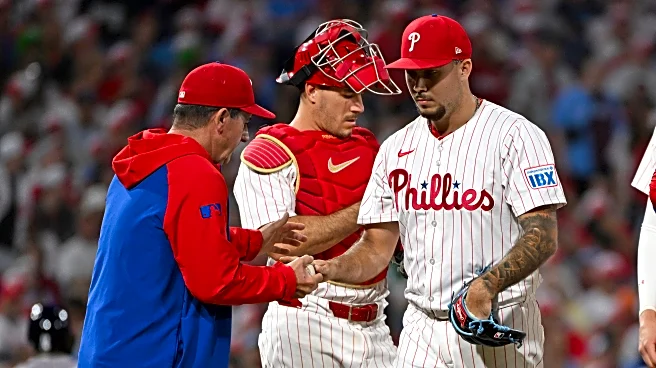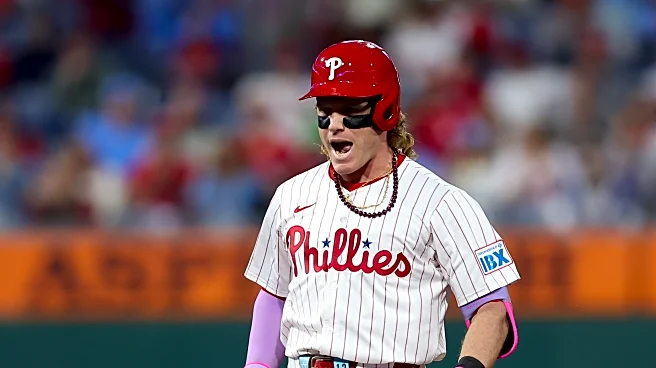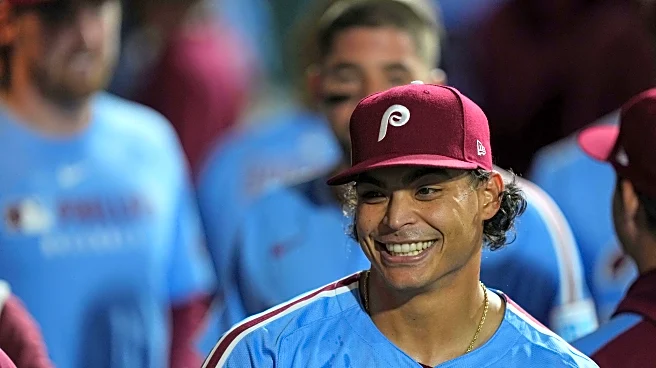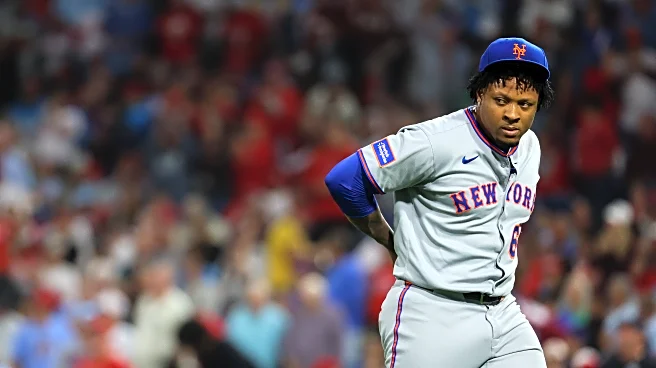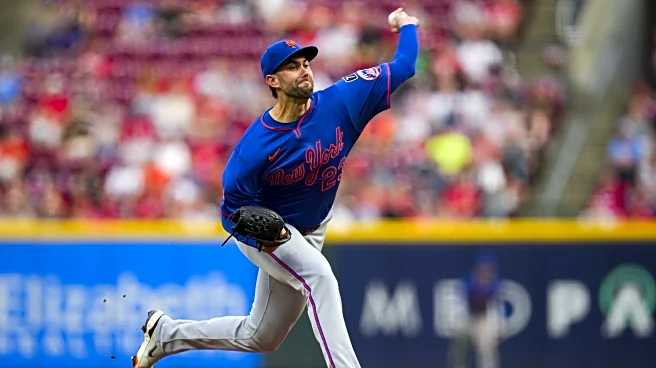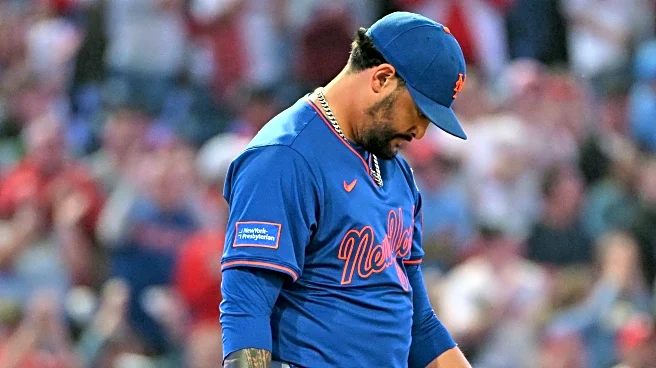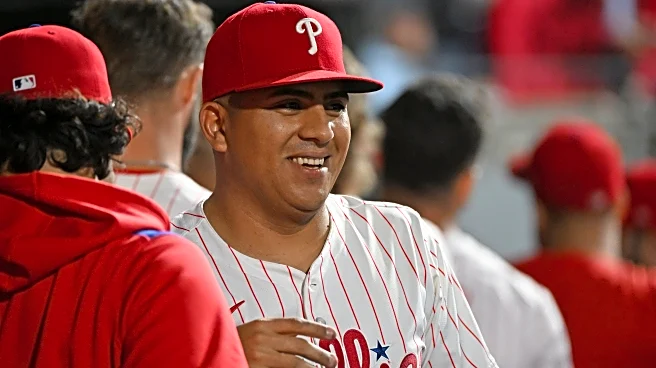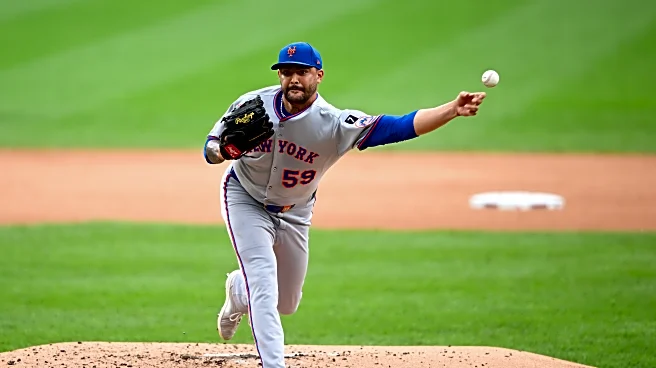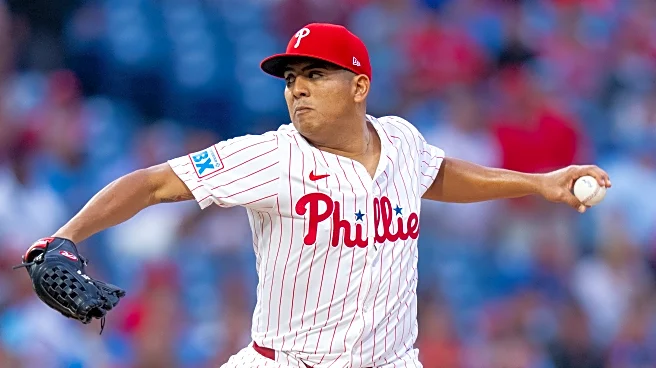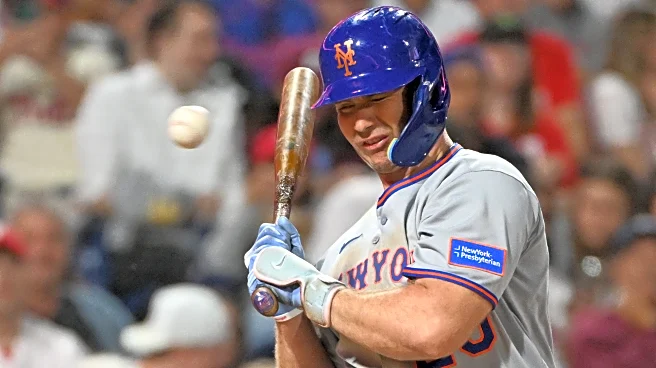The Phillies are now ten games up in the NL East and their magic number to clinch the division is down to seven. The outfield rotation is mostly working, the starting pitching staff has been stable post-Wheeler injury, and most of the bullpen is in good shape. They sit two and a half back from the one seed and look like one of the hottest teams in the sport at the moment.
It’s the momentum they did not carry into last postseason, for what it’s worth.
Approach vs Nolan McLean
Nolan McLean still went
5.1 innings of one-run ball but there were signs of a fun approach early on. After Max Kepler slapped a single in front of Brandon Nimmo in left field, four right-handed hitters stepped up to the plate in the second inning. Three of them got sweepers, and those three generated singles against it.
Harrison Bader took one to the left-center field gap, Nick Castellanos slapped one to right field, and Edmundo Sosa hit one to center field.
Were these great pitches? No, but they still showed a solid game plan against it that wasn’t the case in Citi Field.
Mclean looks like an ace in the making for the Mets currently but if there is one weakness he has currently, it’s how hitters have hit his sweeper. Opponents are hitting .348 with a .478 slugging against the offering with just a 22.0% whiff rate. This is mostly because of a location problem.
Given the velocity and movement profile of the pitch, Mclean should still use it against right-handed hitters but there are better pitches in his arsenal.
The Phillies took advantage of this issue, and it was enough to squeak out a one-nothing victory to start the series.
What is Orion Kerkering’s October role?
After a string of outings in late August that didn’t go well, Rob Thomson has given Orion Kerkering three low-leverage spots in September to try and get him back into form. It’s generated mixed results.
His last outing on Wednesday night was a slog; he needed 29 pitches, allowed two base runners, and still lacks a strong plan against left-handed hitters.
That last point has been the main issue with his season overall. Kerkering is still a force against right-handed hitters, allowing a .609 OPS overall. That number jumps to .751 against southpaws, which would force Thomson to consider using Kerkering in the middle of innings come playoff time.
The problem is that the Phillies might not trust him in those scenarios. Kerkering has allowed 14 of his 31 inherited runners to score. While a stat like this is questionable to project moving forward, it’s still something that might be scary for a manager.
So if Kerkering is someone you don’t want facing three batters because of the chances at least one of them are left-handed and you don’t want him coming in the middle of an inning because of inherited runner issues? How many other options are there going to be for him?
While the season hasn’t been great for him overall, pushing him aside completely in October doesn’t seem like a good plan either. The pitching staff is extremely left-handed, so you would ideally want a right-handed option of Kerkering’s profile. They also don’t have many other right-handed options out of the bullpen outside of their closer, Jhoan Duran.
David Robertson has carried reverse splits in three of his last four seasons and the Phillies’ other right-handed pitchers, Lou Trivino and Max Lazar aren’t high leverage options.
Given the likelihood that the Phillies start three left-handers in the NLDS (assuming they clinch a bye and get there), they will almost certainly need a right-handed fireman to defuse an inning. Kerkering fits the profile but will he execute if given the chance?
